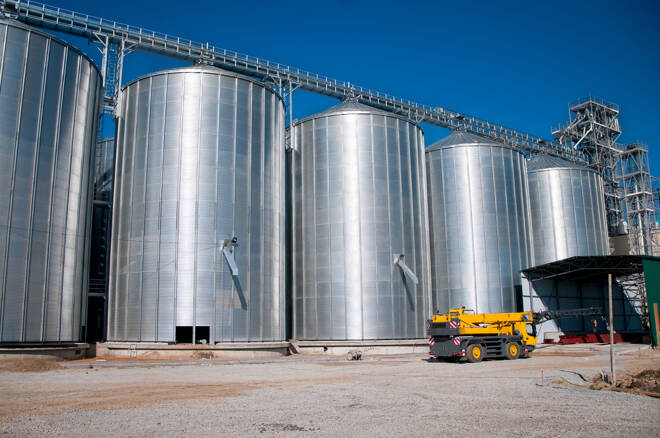Advertisement
Advertisement
Dollar and Metals Sold, Energy Bought Ahead of FOMC
By:
Futures positions and changes made by hedge funds across commodities, forex, bonds and stock indices up until last Tuesday, June 15. A week that covered the period up until last week's FOMC meeting and the hawkish surprise it delivered. Apart from a weaker dollar which attracted additional short selling some of the other markets, most noticeable commodities had already started to see rising risk adversity, most noticeable in metals and agriculture.
Saxo Bank publishes weekly Commitment of Traders reports (COT) covering leveraged fund positions in commodities, bonds and stock index futures. For IMM currency futures and the VIX, we use the broader measure called non-commercial.
The below summary highlights futures positions and changes made by hedge funds across commodities, forex and financials up until last Tuesday, June 15. A week that covered the period up until last week’s FOMC meeting and the hawkish surprise it delivered. Apart from a weaker dollar which attracted additional short selling, some of the other markets, most noticeable commodities had already started to see rising risk adversity, while bond yields crept lower before starting a rollercoaster ride which eventually today has led it back to unchanged pre-FOMC levels. The Bloomberg commodity index traded softer by 2.2% as the rotation out of agriculture and metals into energy continued.
Commodities
The commodity sector saw a small amount of net selling ahead of last week’s FOMC meeting, but behind the 1% reduction to 2.4 million lots we found a week where speculators continued to rotate out of agriculture and metals, both industrial and precious, and into energy, especially crude oil. Chinese efforts to curb industrial metal prices, lower gold prices on reduced inflation expectations as the market “buy” into the transitory message from central banks, and improved weather and growing conditions in the U.S. have all led to long liquidation and reduced appetite for exposure in these sectors.
Energy
The combined net long in oil and fuel products (ex. natural gas) reached 977k lots, the biggest bet on rising energy prices since October 2018. While industrial metals have suffered what looks like a short-term setback on rising market intervention by Chinese authorities and reduced focus on reflation, the energy sector has increasingly become the go to commodities. This in the belief that OPEC+ in the near-term will maintain market tightness as global demand continues to recover, and later on due to increased concerns that lack of CAPEX spent on new production could leave the market undersupplied from late 2022 and onwards.
The combined net long Brent and WTI crude oil reached 737k lots, again a level of exposure that was last exceeded in October 2018. A tightening spread to Brent and speculation that storage levels at Cushing, the WTI futures delivery hub, could shrink further amid strong Midwest refinery demand helped drive a 35% reduction in the gross short, thereby supporting a spike in the long/short ratio to a three-year high at 22.8 longs per one short position. While highlighting the risk a market at risk of becoming one-sided it also shows the strong belief in higher prices currently being exhibited by investors.
Metals
Bullish gold bets were scaled back for a second week with profit taking and fresh short selling emerging ahead of the FOMC meeting and following the recent rejection above $1900. The 10% reduction reduced the net long to 114k lots, a four week low. Silver saw a small amount of buying while copper longs were cut to just 20k lots, a one-year low and some 71k lots below the peak from last October. Once the weak technical outlook, supported by an expected improvement in the fundamental outlook, starts turning the price may see a strong bounce from buyers returning.
Agriculture
The grain and soybean sector continued to deflate with speculators cutting the combined net long in corn, wheat and soybeans by 15% to 352k lots, the lowest since last October. While the wheat net-short extended to 8.4k lots it was corn and not least soybeans that saw most of the selling. This on a combination of improved weather raising production expectations and potentially a reduction in demand for biofuels to be blended with gasoline.
Forex
In forex, the flows across ten IMM currency futures and the Dollar Index were very mixed but overall they resulted in continued dollar selling with the net short reaching a three-month high at $19.3 billion.
However, as can be seen from the table below, speculators were in general risk-off mode across the major pairs with both long and short positions being reduced. This just the day before the FOMC sprung a hawkish surprise which helped send the Greenback sharply higher to record its fourth straight week of gains, thereby challenging the short dollar consensus trade.
What is the Commitments of Traders report?
The COT reports are issued by the U.S. Commodity Futures Trading Commission (CFTC) and the ICE Exchange Europe for Brent crude oil and gas oil. They are released every Friday after the U.S. close with data from the week ending the previous Tuesday. They break down the open interest in futures markets into different groups of users depending on the asset class.
Commodities: Producer/Merchant/Processor/User, Swap dealers, Managed Money and other
Financials: Dealer/Intermediary; Asset Manager/Institutional; Leveraged Funds and other
Forex: A broad breakdown between commercial and non-commercial (speculators)
The reasons why we focus primarily on the behavior of the highlighted groups are:
- They are likely to have tight stops and no underlying exposure that is being hedged
- This makes them most reactive to changes in fundamental or technical price developments
- It provides views about major trends but also helps to decipher when a reversal is looming
This article is provided by Saxo Capital Markets (Australia) Pty. Ltd, part of Saxo Bank Group through RSS feeds on FX Empire
About the Author
Ole Hansencontributor
Ole Hansen joined Saxo Bank in 2008 and has been Head of Commodity Strategy since 2010.
Advertisement
